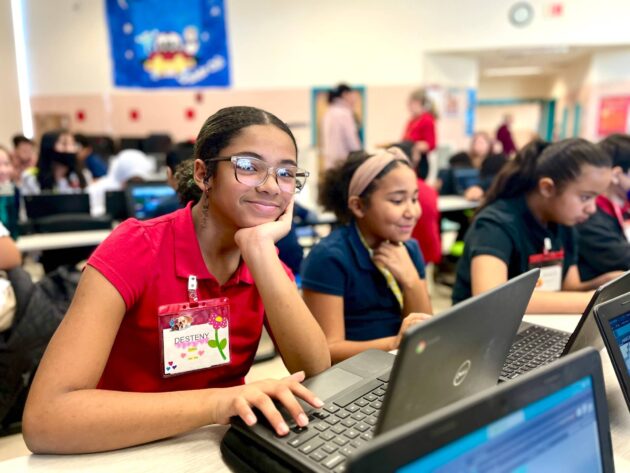
More U.S. schools are offering computer science courses than ever before and the classes are more racially and ethnically diverse than in the past.
But less than half as many female to male students are enrolling in computer science classes — a ratio that hasn’t budged for the past three years. Only 31% of U.S. students in foundational computer courses are female, according to a new annual report out Wednesday from the educational nonprofit Code.org.
The solution might be making computer science a graduation requirement.
Eight states have taken that step — and they’re not necessarily the tech hubs you’d expect. They are Arkansas, Nebraska, Nevada, North Carolina, North Dakota, Rhode Island, South Carolina and Tennessee. Maryland and Mississippi have related requirements that can be met with computer science classes.
“It is possible and it’s not a billion dollar problem to solve.”
– Sean Roberts, Code.org’s vice president of government affairs
South Carolina’s class of 2024 is the first in the state to graduate with the new requirement and 47% of the students in its computer classes are female. Maryland has 41% female enrollment while Mississippi is close to gender parity. Nevada, the first state to implement the graduation rule, still lags at 31%.
Washington, which has policies supporting the funding of computer science education and course requirements for schools, was slightly below the U.S. average with 30% female students. Oregon had a lackluster 22% participation rate among female students.
Seattle-based Code.org, which provides computer science curriculum and teacher training for free, is pushing for all states to adopt the grad requirement.
“It is possible and it’s not a billion dollar problem to solve,” said Sean Roberts, Code.org’s vice president of government affairs, while also acknowledging the budget challenges confronting districts nationwide.
While the gender gap persists, access to computer science classes has grown dramatically in recent years. More than 57% of high schools nationally offered computer science classes in the last school year, up from 35% from the 2017-18 school year.
The report, called the “2023 State of Computer Science Education,” focused on other pressing areas in the field, as well.
- Artificial intelligence: The report calls for developing policies for the “effective and responsible teaching of AI.” That includes training teachers and instructing students in how to use and understand AI.
- Early access: Exposing students to computer science in elementary school years can help close some of the gaps in participation. It includes activities kids are already doing, though teachers aren’t always making the connection to technology, such as lessons in sequential thinking, ordering tasks and problem solving.
- Improved access in small schools: Only 41% of small schools (less than 500 students) offer computer science classes while they’re available in 90% of large schools (more than 1,200 students). Some 75% of medium-size schools offer the courses.
Policies and funding to help improve access and participation in computer sciences are politically viable, said Roberts.
“There’s no real partisan divide,” he said. “Everyone agrees that students need computer science.”

